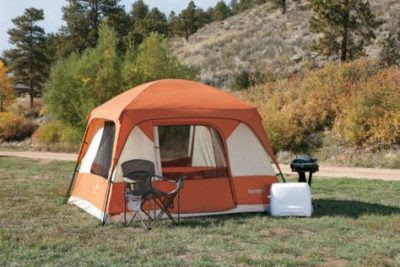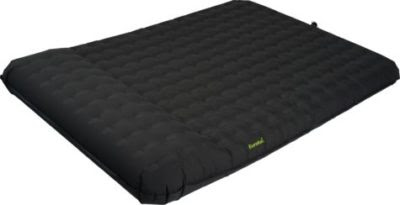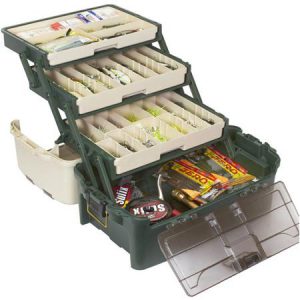Bottom bouncing for Chinook and Sockeye salmon has become far and away the most prominent method of fishing in recent summer runs for sports fishermen. Gear used for bottom bouncing in rivers such as the Columbia or Fraser, is unlike any other and very productive. The only necessity to have a good day fishing Sockeye using this method, is making sure they will be there in moderate numbers allowing even beginners, to experience results!
Lets have a look at some of the standard stuff now. A 1O.6 ft graphite rod that is used for salmon and levelwind reel is a typical river set up and will be perfect. If you are new to bottom bouncing and don’t have funds to go buy anything right away, a medium action spinnig rod and reel in the 8 to 9ft range can get you started too. The terminal tackle such as weights, line swivels and more also make all the difference and we’ll have a look at that next.
A large river system plus a large fish like a King salmon equals allot of pounds on your gear. This all equates to have a line that has a strong enough test as to not snap yet not be too much to damage lost fish or equipment. My modo to buying anything (my wife hates it) is “you always get what you pay for!” This modo has cost me allot of money but everything I buy lasts me!! When it comes to fishing line this modo holds true – buy quality or you will be sorry. A 15lb to 30lb test is perfect for your mainline and a capacity of 150 to 225yds is good, especially if you hook a big Chinook! I like the super lines such as Berkleys Fire-Line as the actual diameter of the line is so thin, that you can beef up your test a bit, it doesn’t have memory like monofilament and it’s got much more feeling transmitting which results in more hook sets. Berkley has won awards for it’s new “Fireline – Crystal” which integrates the quality of superline of a braided nature and clerity of a monofilament line, making for the most versatile and powerful superline available.
The next thing you’ll need is a basic swivel, size 10 or 8 will work. I like to have a ball chain swivel connected to my leader from my main line. Before I attatch my ball chain though I put a bead that is bigger than the eye of the Bouncing Betty weight that will slide up and down the line freely above the swivel. The ball chain swivel acts as a guard from the bouncing betty weight, that can damage the mainline, put nicks in it and lead to a lost fish or leader setup. The bead above the swivel acts as a bearing and allows the bouncing betty weight to move around and not get hung up on the swivel as it’s moving in the water. This setup is my favorite and is one of many ways to rig up your salmon gear.
There are several different types of weights on the market that work well while bottom bouncing for Chinook and Sockeye salmon. First is standard pencil lead, its cheap and versatile, although can cause problems. Pencil lead is commonly bought in coils. The advantage to pencil lead is how it’s bought, as you can cut off exactly how much weight you want to use. The disadvantage of it is that if you don’t know how much weight to cut off, you won’t get the depth or feel that you need, not ot mention it’s made of lead so it’s toxic and not good for the environment. Pencil lead is also cumbersome and is not as popular as a bouncing betty weight ball – I wouldn’t recommend them for this specific fishing technique.
Another weight used while bottom bouncing is called a slinky weight. A good way to describe this is; a cord with lead or steel split-shot pushed inside while the ends are heated shut and a snapswivel is attatched at the end so you can hook it up to another swivel or your line. The advantage to a slinky weight is that they are less likely to get snagged because they are less likely to hang up unlike other weights. A disadvantage to them is they don’t have as much bottom “feel” or transmission as say, a ball weight.
After we have our rod, reel, mainline and swivel picked out the next thing we need to discover is how to choose a good leader for the system we’re fishinig. The leader material should be one or two line “ratings” less than your mainline, 12 or 15lb test is usually good for your blueback (Sockeye), but for beginners or even advanced anglers, you may want to use a heavier test like a 25lber in case you get into a rockin’ Springer.
Remember how I said you get what you pay for? Well a good abrasian resistant, stiff mono that is of good quality, will find you better landing chances. With that, the next tip I give you is arguably one of the most contraversial peices of advice out there! Ready? You want Sockey and Sping salmon? Use a 15 FOOT leader!! Yup 15 feet! This is considered “cheating” by allot of anglers or conservationists and is deadly effective, but I’m telling you the secret to catching lots of fish here right? Some will call it flossing or snagging, but above all It’s one true way to get an unbelievable amount of salmon in the big coastal river systems.
Don’t piss your fellow anglers off!! WATCH YOUR LINE! Read this!
Try and remember that casting a leader that is 15 feet long on a big river can be difficult, challenging and dangerous. Hooks are floating under the water and cannot be seen! If you have a couple “beaks” (slang for an angler with no etiquette and is only interested in his own environment or gear.), that are way out in the water infront of everyone elses drift, you have to reel in sooner so you don’t hook them. Also always be aware of your back-cast and actual cast! Most fishermen who are bottom bouncing have laser sharp hooks that will cut through your leg or head with ease. One more thing to remember; while landing a big King long leaders can prove to be even more of a task as your leader is only able to reel up as far as your weight and rod tip will allow, or in other words, once your weight hits your rod tip you still have a fifteen foot leader with a fish on the end that you have to land somehow!
Common “lures” if that’s what you want to call it – considering salmon are generally territorial and not biteing, but rather getting snagged – will consist of either Spin ‘n’ glows, corkies and/or yarn. Color is not very important and I have always had great success with all colors although purple or bright yellow (chartreuse) is my most successful color. Size 12 or 14 is common for spin ‘n’ glo’s and corkies, while a “tuft” of wool that is about as long as two digits of your finger long will work.
Last on the list is the hook. Standard steelhead style hooks are perfect, size 1 to 3/0 work fine. Remember, as with line, you get what you pay for. Buy quality hooks, its worth it.
Finally, now that we have our bottom bouncing set up all ready, how do we fish it? Well it is not all to difficult but will require some practice to fully master. Basicly you will want to make your cast slightly up stream, then immediately pick up your slack line, but do not retrieve. Allow your gear to bump along the river bottom. While your gear is travelling along the river bottom, follow its direction with your rod tip and hold your rod at about 45 degrees, as your line starts to flow past you feed additional line out to extend your drift. After you have gone about 25 yards, then retrieve and repeat as necessary. When you are first getting started don’t worry too much about feeling the bite or take of the fish. It is very subtle and for the most part this will take care of itself as the rod will just bend over and get heavy and the fish is on!
Fraser river Sockeye fishing is unique in that this is an abundant fishery, so retention of fish is permited and this is a good thing. There is nothing better than enjoying a fresh sockeye with family and friends that you actualy caught yourself. As anglers we have a responsibility to make sure that the fish we retain are not wasted. Here are a few tips to make sure your catch makes it home in prime condition. Once you have caught a Sockeye and have dispatched it, cut or pull out a gill from both sides of the fish. This will allow the fish to completely bleed out. Bleeding stops any bruising and improves the quality of the meat. Allow about ten minitus to properly bleed out the fish. As soon as the fish is finished bleeding then clean or dress the fish immediately. Once the fish is properly dressed out, you must store it on ice in a cooler. I have seen many Sockeye stored unbled and uncleaned on the beach or in the shallows by the beach basicly rotting in the sun, this is such a waste and is not necessary After all the effort and expense it takes to go fishing, it just makes good sense to make sure our catch comes home in prime condition and not as fertilizer.
The reality of living in a populated area is that when the weather is warm and there are lots of fish around, the people just seem to come out of the woodwork (sometimes called “beaks”)! The fact is, you will probably be fishing with other anglers, in some cases, lots of other anglers. In peak season, 3000 to 5000 anglers per day will fish the Fraser river for Sockeye. The good news is that the Fraser is huge and there is room for all. Here are a few tips to help everyone to get along. First, treat everyone else as you would like to be treated. Second, don’t crowd out the person fishing in the spot you wanted. If he or she is there first go somewhere else or wait your turn. Third, parents don’t let inexperienced children fish in crowded conditions, it causes nothing but havoc. Fourth, anglers be patient with inexperienced children, even if they have just snagged your line for the tenth time in a row .Its not their fault that their father is more concerned about catching fish himself than teaching them how to fish properly. Fifth, leave the ghetto blaster at home!! AC/DC or Metalica is not part of a quality fishing experience. Sixth, pick up and pack up your own garbage! Your mamma is not here to pick up after you! Remember, the Fraser belongs to all of us, a little common sense and mutual respect will make for a great days fishing for all.
Do the Sockeye of the Fraser river actually bite?, or are all of them flossed or lined? Well, I believe the answer is yes and no. First, what is flossing or lining? This is the practice of swinging a long leader (6 to 10ft) along the bottom of the river with the intent of having that leader swing through the mouth of the fish swimming upstream. When the leader swings through the mouth of the fish, it is followed by the hook, which then gets pulled into the corner of the fishes jaw. First, is this legal or is this just snagging? Snagging, by the letter of the law, is described as the intent to hook a fish in a part of the body other than the mouth. Lining or flossing is designed to hook the fish in the mouth, so technically, this is legal. I personaly know several conservation officers who also avidly fish the Fraser in this manner, so from their standpoint, there is no legal problem. Any fish that is unintentionally snagged should be quickly and carfully released as keeping a fish that has been foul hooked is illagal and unethical. Second, will Sockeye bite a lure? The answer is yes, but when you consider the conditions in which we are fishing in the Fraser where the water visability is approximately 6 to 10inches and the water where the Sockeye are caught most often is fairly fast. Sockeye only get about a 1/2 second to see and react to a bait. So some sockeye do bite, but yes the majority are definately flossed or lined. Some people feel that this type of fishing is unethical, personaly because of the conditions in the fraser I think there is a place for this technique here, but in other clear water rivers where Salmon run and the conditions make it possible to fool a fish into biting your lure, I feel this would not be ethical. Basicly, this is a personal decision, but as I see it, most anglers have decided to accept this style of fishing and enjoy this tremendous fishery that the Fraser river has to offer.
Over the past several seasons it seems that the Sockeye season has been bogged down in controversy and political nonsence. Well thats because it has!( Dont get me started) As I sit here writing this in preparation for this magazine and the upcomming fishing season I really can’t say 1OO percent that there is actually going to be a Sockeye season at all. The predictions are huge and things look really good, but you just can’t predict what the Department of Fisheries and Oceans is going to do this year. Last season was not bad, they could have opened the fishery a little earlier than they did, but all in all, it was a good season. The D.F.O has a habit of making political decisions, not necessarily the right decisions. All we can do at this point is hope for the best and wait for the word. Your local tackle shop should be up to date as to when the fishery opens and to the retention limits of the various Salmon species.
It has been an interesting 8 years or so since the fraser river was opened to Sockeye fishing… to say the least. This fishery has changed not only the sport fishing industry but to some degre the summer lifestyles of the anglers who fish it. This is an amazing fishing experience. With warm weather and plentiful silver fish, its no wonder why Sockeye season is so popular. One thing is for sure, whether you love it or hate it, and most anglers love it, there will not be a cure for the Sockeye fever of the Fraser river any time soon.
_________________________________________________________
When fishing in busy river systems sometimes refferred to as “bottom bouncing,” there is actually an etiquette! Much like golfing you should follow these rules:
Never cast your line or lure on top of another’s line. Doing this will result in a snag, but most importantly the loss of a fish that may not be legal if one is hooked by accident not to mention angry anglers and they can get real angry. (remember its supposed to be fun).
Always cast upstream and don’t cast any more than two people above you if it’s shoulder to shoulder crowds. Casting upstream more than that effects the “flow” of casting to anglers and can be frustrating to have to wait for someone who does this.
As your line drifts downstream, keep it clear of peoples legs that are in the river, and don’t forget that your line will be further down the stream than where you see it go into the water. If you can see the person beside you at the end of your drift in a straight river, chances are you’re line has drifted too long.
The person who is up-stream from you always casts first! You should be aware of your surroundings, whats going on and wait for the line to drift down a bit before casting OVER their line. This will help prevent snags and keep the casting flow going.
If you have a fish on your line, you should yell “fish on” to let people know that you’ll need space.
If you think that you have a Chinook on – usually they strip lots of line from your reel immediately, or they will hold in one spot or they will give a “head shake” which will cause your rod tip to go down in large downward bends – yell “SPRING ON!” and start moving with it down the river if you have to (and usually you have to).
If you think that you have a Sockey – which instantly go nuts and move all over the place – or something else on, you should be able to bring the fish in where you are, so try not to take up the whole river unless your not sure, and get it in as quickly (without horsing it) as possible.
It’s common sense, not to mention illegal in some cases and un-ethical in most others, that if you have your limit, you should give your spot up to another angler.
Clean up after your self for goodness sakes!! Theres enough lost gear in the river as it is and it doesnt’ warrant you being able to leave your beer/pop cans or tackle on the river bar.
Read the rules of the regulations before you fish. I don’t know how many times I’ve seen guys out there catching fish and not knowing what kind of fish they had or what body of water allowed them to fish for certain species of salmon. The species section will help you with this, so please take advantage of it!
Have fun! Plain and simple. If you follow these rules you’ll have fun out there, and just remember there are always going to be “grumpy fishers” out there that are not willing to teach beginners and show a little patience, but rather complain and whine. It’s best to avoid these people all together, as they just wreck the sport for everyone.
https://www.gosalmonfishing.com
http://www.rifles-n-rods.com







 INSTANT DOWNLOAD!
INSTANT DOWNLOAD!